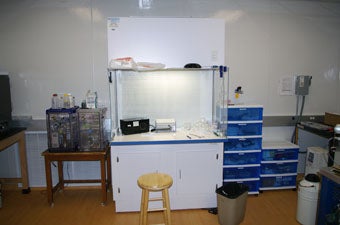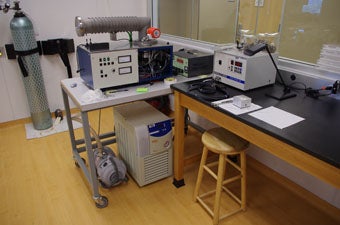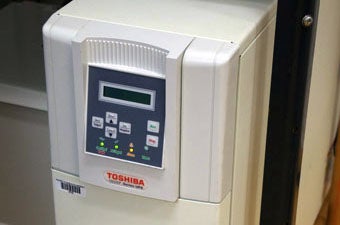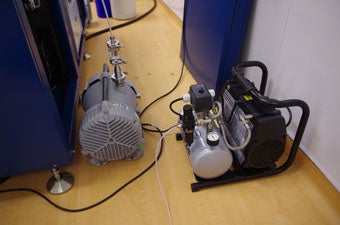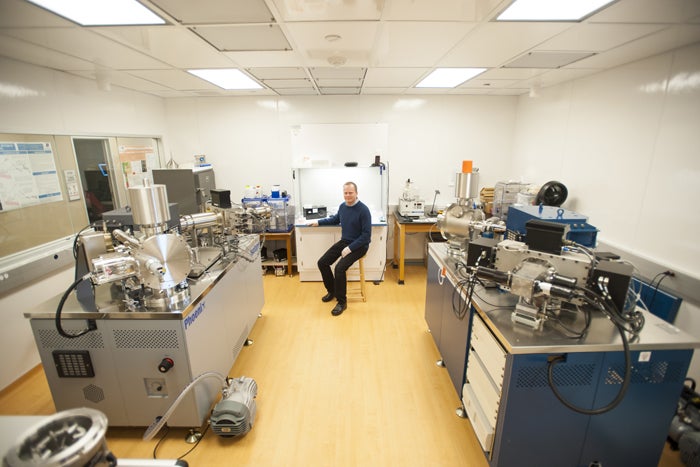
A temperature (± 1°F) controlled, HEPA-filtered, positive pressure room (ERB-5116A) houses two thermal ionization mass spectrometers acquired through National Science Foundation Major Research Instrumentation grants: the IsotopX Isoprobe-T mass spectrometer delivered in fall of 2006 and moved to the ERB in summer 2011, and the IsotopX Phoenix X62 mass spectrometer installed in spring 2014. Control of the instruments is maintained remotely in an adjoining control room (ERB-5116) which also hosts mineral picking, optical photomicroscopy, and provides direct access to the ERB-5118 wet chemistry clean laboratories.
The IsotopX Phoenix X62 multicollector thermal ionization mass spectrometer is a magnetic sector instrument with an extended geometry 62 cm dispersion at unity magnification. The collector block is fitted with 9 motor-driven fully adjustable Faraday cups arranged symmetrically about the adjustable Axial Faraday. Behind the Faraday array is a wide-angle retarding potential (WARP) filter for high abundance sensitivity measurements, a positive ion-counting conversion dynode-scintillator-photomultiplier (Daly) detector, and a discrete dynode secondary electron multiplier for negative ion counting. The system is evacuated with a Pfeiffer Model TMH521P 520 L/s turbomolecular pump backed by an Edwards nXDS-10 scroll pump (source) and two Varian StarCell (40 L/s and 70 L/s) ion pumps (analyzer). The Phoenix has been upgraded with the high dynamic range ATONA® Faraday amplifiers.
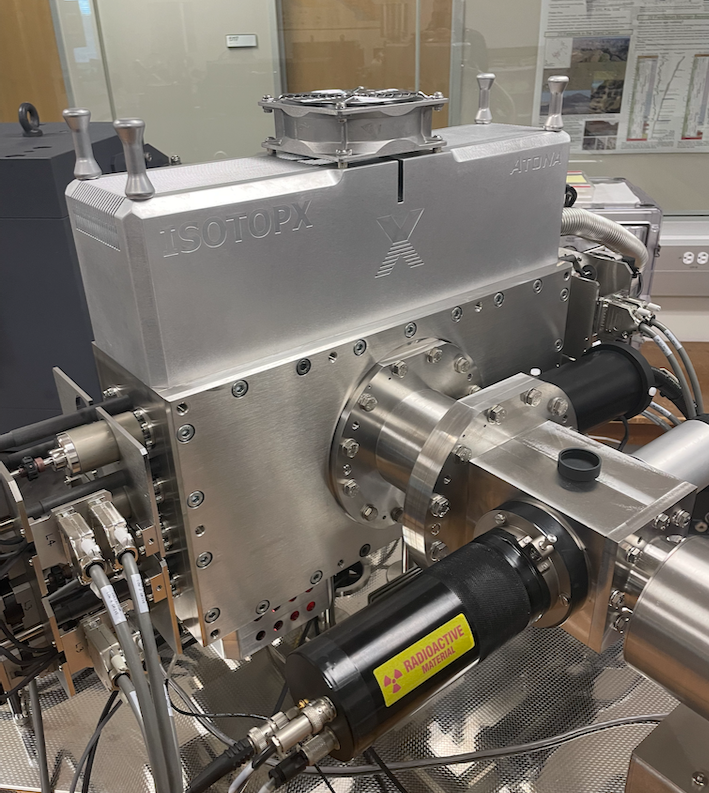
The IsotopX Isoprobe-T multicollector thermal ionization mass spectrometer is a magnetic sector instrument with 54 cm dispersion at unity magnification. The collector block is fitted with 9 motor-driven fully adjustable Faraday cups arranged as 6 high Mass Faradays, one adjustable Axial Faraday and 2 low mass Faradays, an ion-counting conversion dynode-scintillator-photomultiplier (Daly) detector, and wide-angle retarding potential (WARP) filter positioned between the main collector array and the rear ion counting detector for high abundance sensitivity measurements. The vacuum system is evacuated with a Pfeiffer Model TMH521P 520 L/s turbomolecular pump backed by an Edwards nXDS-10 scroll pump (source) and two Varian StarCell (40 L/s and 70 L/s) ion pumps (analyzer). Upgrades to the collector end include fitting of an Edwards XDS-10 scroll pump to the Decabin amplifier housing, upgrade of the 10^-11 ohm resistors amplifier boards to the new Xact design, addition of a second Decabin fitted with new Xact 10^-12 ohm resistor amplifiers for enhanced signal-to-noise on small ion beam measurements, and upgrade of the photomultiplier and amplification electronics of the Daly ion-counting detector.
